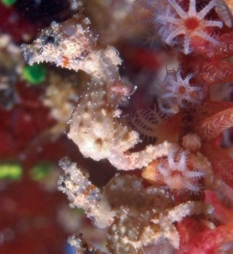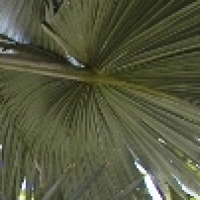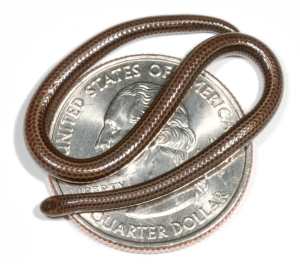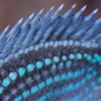 How many new species would you guess are discovered by scientists in a given year? Would you believe, a tally of more than 18,000 species in 2007 alone?
How many new species would you guess are discovered by scientists in a given year? Would you believe, a tally of more than 18,000 species in 2007 alone?
From among the more than 10,000 newly spotted species each year, scientists have named the top 10 new species — the most colorful, weird and surprising of them all.
The Arizona State University ‘s International Institute for Species Exploration along with a committee of taxonomists – scientists responsible for species exploration and classification – tallied their votes to come up with the list for 2008, which includes a pea-sized seahorse, caffeine-free coffee and bacteria that live in hairspray.
The top 10 new species also include the world’s tiniest snake just 4 inches long, an insect as big as a dog, a ghost slug from Wales, a deep blue damselfish, and a palm that flowers itself to death.
According to Quentin Wheeler, an entomologist and director of the International Institute for Species Exploration at Arizona State University, a new generation of tools are coming online that will vastly accelerate the rate at which we are able to discover and describe species.
“Most people do not realize just how incomplete our knowledge of Earth’s species is or the steady rate at which taxonomists are exploring that diversity. We are surrounded by such an exuberance of species diversity that we too often take it for granted,” says Wheeler, who also is ASU vice president, dean of the College of Liberal Arts and Sciences, and a professor in the School of Life Sciences.
Top 10 New Species for 2008
1) The finest of this year’s chosen animals may be the tiny seahorse, shown above, (Hippocampus satomiae) measuring less than one half inch long (13.8 millimeters). This pygmy species was found near Derawan Island off Kalimantan, Indonesia. The name – satomiae – is in honor of Miss Satomi Onishi, the dive guide who collected the type specimens.

2) From the plant kingdom is a gigantic new species and genus of palm (Tahina spectablilis) with fewer than 100 individuals found only in a small area of northwestern Madagascar. This plant , producing a huge, spectacular terminal inflorescence with countless flowers. After fruiting, the palm dies and collapses. Soon after the original publication of the species description, seeds were disseminated throughout the palm grower community, to raise money for its conservation by the local villagers. It has since become a highly prized ornamental.
3) The caffeine-free coffee from Cameroon (Coffea charrieriana) is the first record of a caffeine-free species from Central Africa.
4) A new “spray on species” was discovered in hairspray by Japanese scientists. The species – an extremophile bacteria – (Microbacterium hatanonis) was named in honor of Kazunori Hatano for his contribution to the understanding of the genus Microbacterium.

5) As large as a dog, Phobaeticus chani made the list as the world’s longest insect with an overall length of 22.3 inches (56.7 centimeters). The insect, which resembles a stick, was found in Borneo, Malaysia.
6) The ghost slug (Selenochlamys ysbryda) was a surprising find in the well-collected and densely populated area of Cardiff, Glamorgan, Wales. The name alludes to the species’ ghostly appearance, nocturnal, predatory behaviour and the element of mystery surrounding its origin.
 7) The Barbados Threadsnake (Leptotyphlops carlae) measuring 4.1 inches (104 millimeters) is believed to be the world’s smallest snake. It was discovered in St. Joseph Parish, Barbados.
7) The Barbados Threadsnake (Leptotyphlops carlae) measuring 4.1 inches (104 millimeters) is believed to be the world’s smallest snake. It was discovered in St. Joseph Parish, Barbados.
8) A snail (Opisthostoma vermiculum) that appears to be coiling and twisting like a worm under attack was found in Malaysia with a shell that twists around four axes. Representing a unique morphological evolution, it is endemic to a unique limestone hill habitat in Malaysia.
9) The other two species on the top 10 list are fish: Discovered in a deep-reef habitat off the coast of Ngemelis Island, Palau, a beautiful species of blue damselfish (Chromis abyssus) highlights how little is known about deep-reef biodiversity.
deep-reef biodiversity.
10) A fossilized specimen was catalogued as the oldest known vertebrate to be viviparous (live bearing). Materpiscis attenboroughi is an extremely rare find from Western Australia, that shows a mother fish giving birth approximately 380 million years ago. The holotype specimen has been nicknamed “Josie” by the discoverer, John Long, in honor of his mother.
The Top 10 list coincides with the anniversary of the May 23 birth of Carolus Linnaeus, who initiated the modern system of plant and animal names and classifications. The 300th anniversary of his birth was celebrated worldwide in 2007.
There are an estimated 1.8 million species that have been described since Linnaeus initiated the modern systems for naming plants and animals 251 years ago. Scientists estimate there are between 2 million and 100 million species on Earth, though most set the number closer to 10 million.
Of the 18,516 species described (named) in 2007, 75.6 percent were invertebrate animals, 11.1 percent were vascular plants and 6.7 percent were vertebrates.
An international committee of experts, chaired by Janine N. Caira of the University of Connecticut, selected the top 10 new species for this year’s list. Nominations were invited through the species.asu.edu Web site and also generated by institute staff and committee members. Last year’s Top 10 list is online at species.asu.edu, along with an invitation to nominate a species yourself.
RELATED Good News Network story: Top 10 Species for 2007



















